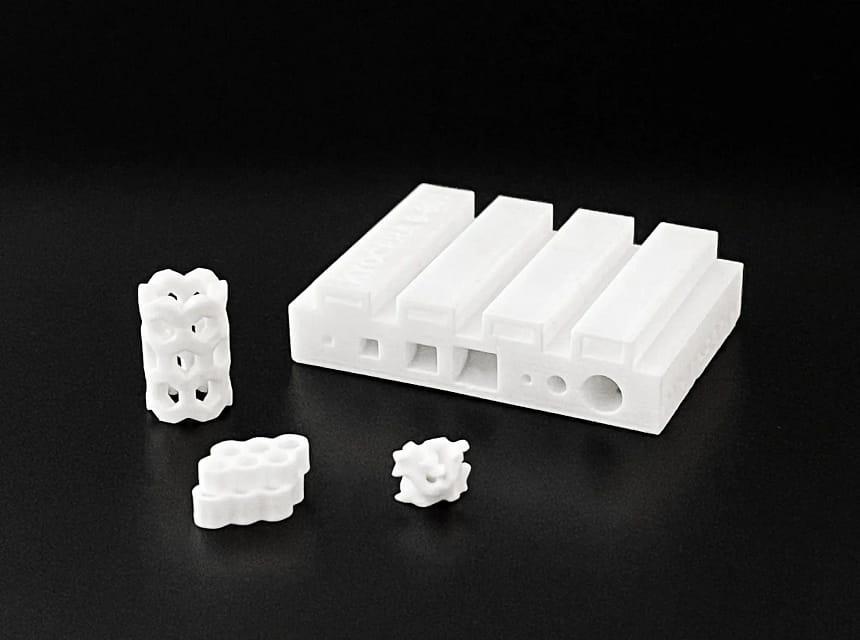Using this method, it is possible to manufacture products with complex geometries and almost any type of customized shape. In addition, prototypes can be created very quickly, allowing production volumes of thousands of units per week to be reached in a short period of time.
Kyocera’s Ceramic Additive Manufacturing uses alumina and zirconia as base materials. Products and components produced with 3D printing technology have the same material properties as products made by using more traditional processes such as injection moulding or isostatic pressing.

In comparison to these methods, CAM offers the advantage of being able to realise complex geometries and almost any customer-specific shape.
Alumina is a versatile ceramic material with high strength, stiffness, and wear resistance. Zirconia is characterized by high mechanical strength, toughness and wear resistance.
Therefore, both materials are a good choice for applications requiring a long service life. Ceramic additive manufacturing enables low tolerances, narrow channels, composite shapes and much more.
With a lead time of about two weeks, it is possible to produce prototypes. A subsequent transition to large-scale production of up to thousands of units per day is possible in a very short time. In contrast to other production processes, no costs or time are incurred for the production of special tools.
It is possible to make design modifications in real time by making changes to the 3D CAD model. This even allows the simultaneous production of several iterations of a design.
The manufacturing processes for prototypes are identical to those for series production. Even complex forms such as internal passages and cavities, interlocking assemblies or curved surfaces can be realized. It is also possible to integrate text, logos, labels and serial numbers.
Examples of CAM-printed components include medical implants, spray nozzles, electrical coils and insulators, fluid flow / internal tubing or valves and bearings.
Technical specifications: CAM-printed objects have a wall thickness between 0.25 and 10 mm. The maximum size of a single object is 200 x 105 x 40 mm. The tolerances are below +/-1 % (as-fired).
Kyocera’s range of services related to Ceramic Additive Manufacturing include 3D design and modeling with CAD, structural and flow analyses (FEA/CFD) as well as conjugate heat transfer analysis.
In addition, CAM enables computer-aided machining of parts with multiple axes.




